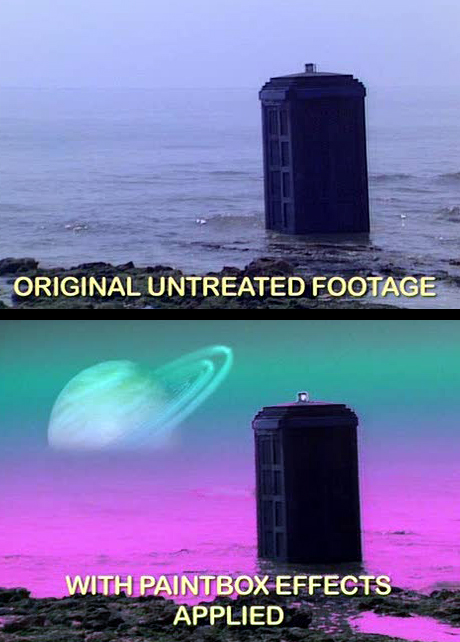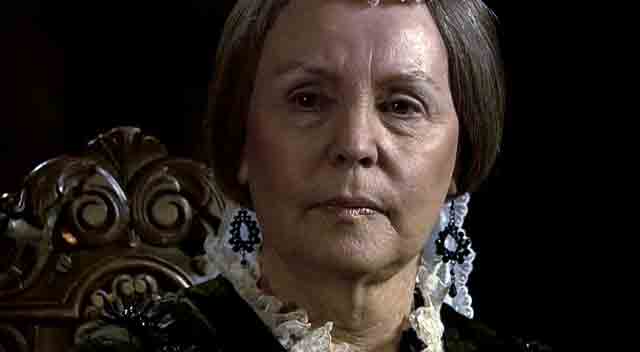Transmat:Doctor Who: Difference between revisions
No edit summary Tags: Shouting sourceedit |
m (Reverted edits by 184.185.141.100 (talk | block) to last version by SOTO) |
||
| Line 4: | Line 4: | ||
<div id="tr-box-container" class="tr-box-cols" style=margin-top:40px> | <div id="tr-box-container" class="tr-box-cols" style=margin-top:40px> | ||
<div class="tr-box one"> | <div class="tr-box one"> | ||
{{thead|The women who gave ''Doctor Who'' back to us}} | {{thead|The women who gave ''Doctor Who'' back to us}} | ||
[[file:JaneTranter.jpg|center|link=http://tardis.wikia.com/wiki/Transmat:Doctor_Who?file=David_Tennant_interviews_Doctor_Who_Producers_-_Doctor_Who_Confidential_-_BBC]] | [[file:JaneTranter.jpg|center|link=http://tardis.wikia.com/wiki/Transmat:Doctor_Who?file=David_Tennant_interviews_Doctor_Who_Producers_-_Doctor_Who_Confidential_-_BBC]] | ||
{{tcap|Click for video}} | {{tcap|Click for video}} | ||
Think ''Doctor Who'' is just for boys? Don't you believe it. Not only was the show's [[Verity Lambert|very first producer]] a woman, but it would never have come back without the fierce advocacy of '''[[Jane Tranter]]''' and '''[[Julie Gardner]]'''. Considering her importance to ''Doctor Who'' it's somewhat ironic that Tranter's only on-screen ''credits'' are for ''[[Torchwood: Miracle Day]]''. But Gardner, her "partner in crime", is tied only with [[Russell T Davies]] as the most prolific producer in ''[[Doctor Who]]'' history. | Think ''Doctor Who'' is just for boys? Don't you believe it. Not only was the show's [[Verity Lambert|very first producer]] a woman, but it would never have come back without the fierce advocacy of '''[[Jane Tranter]]''' and '''[[Julie Gardner]]'''. Considering her importance to ''Doctor Who'' it's somewhat ironic that Tranter's only on-screen ''credits'' are for ''[[Torchwood: Miracle Day]]''. But Gardner, her "partner in crime", is tied only with [[Russell T Davies]] as the most prolific producer in ''[[Doctor Who]]'' history. | ||
</div> | </div> | ||
<div class="tr-box two"> | <div class="tr-box two"> | ||
| Line 15: | Line 15: | ||
The '''[[Quantel Paintbox]]''' was a graphics workstation that allowed ''[[Doctor Who]]'' to have a primitive form of [[colourist|colour grading]] in the [[1980s]]. To find out more about the "business of show", go to '''[[:category:production information]]''', where you can read about [[colour separation overlay]], [[low loader]]s, [[telerecording]]s, [[vidFIRE]], [[rostrum camera]]s, [[2" quad]] tape, [[Ealing Studios]] and tons more.</div> | The '''[[Quantel Paintbox]]''' was a graphics workstation that allowed ''[[Doctor Who]]'' to have a primitive form of [[colourist|colour grading]] in the [[1980s]]. To find out more about the "business of show", go to '''[[:category:production information]]''', where you can read about [[colour separation overlay]], [[low loader]]s, [[telerecording]]s, [[vidFIRE]], [[rostrum camera]]s, [[2" quad]] tape, [[Ealing Studios]] and tons more.</div> | ||
<div class="tr-box one"> | <div class="tr-box one"> | ||
{{thead|Surprising guest star}} | {{thead|Surprising guest star}} | ||
{{surprising guest}} | {{surprising guest}} | ||
</div> | </div> | ||
Revision as of 17:27, 28 April 2016
The Doctor Who theme was composed by Ron Grainer and made its debut with the first episode of the Doctor Who series in 1963. Although it has undergone many rearrangements, this piece of music has remained the sole theme for the series throughout its history, making it one of the most recognisable themes in television. It is also one of the longest continually-used pieces of theme music in British entertainment history, surpassed only by the theme from Coronation Street (in use since 1960), and the "James Bond Theme" (in use since 1962).
Think Doctor Who is just for boys? Don't you believe it. Not only was the show's very first producer a woman, but it would never have come back without the fierce advocacy of Jane Tranter and Julie Gardner. Considering her importance to Doctor Who it's somewhat ironic that Tranter's only on-screen credits are for Torchwood: Miracle Day. But Gardner, her "partner in crime", is tied only with Russell T Davies as the most prolific producer in Doctor Who history.
The careers of the Fifth, Sixth, Seventh and Eighth Doctors are significantly longer in audio than on television. Check out their latest works at category:2024 audio stories
Officially, only The Lodger has been explicitly adapted from a comic strip — also called The Lodger.
However, several stories have clearly taken material from comic strips — often those in Doctor Who Magazine. The Shakespeare Code contains a good amount of material from A Groatsworth of Wit, and the notion of the Doctor absorbing the time vortex in order to spare a companion was explored in both The Parting of the Ways and The Flood.
Donald Baverstock was the BBC executive who set the the wheels in motion that eventually led to the creation of Doctor Who. Essentially the original commissioner of the programme, he hired Sydney Newman and later imposed a sense of financial responsibility upon producer Verity Lambert.
But Baverstock wasn't the only BBC executive to have a profound impact on the development of Doctor Who. Make sure you read about Lorraine Heggessey, Mark Thompson, Danny Cohen, George Entwistle, Tony Hall, Shaun Sutton, Sydney Newman and others.- 1965 - Part three of the TV Comic story Enter: The Go-Ray was published.
- 1969 - Part one of the TV Comic story The Night Walkers was published.
- 1975
- Part three of Pyramids of Mars premiered on BBC1.
- Part three of the TV Comic story The Space Ghost was published.
- 1979 - DWM 5 was published by Marvel Comics.
- 1980 - Part three of Full Circle premiered on BBC1.
- 1984 - DWM 95 was published by Marvel Comics.
- 1986 - Part two of Terror of the Vervoids premiered on BBC1.
- 1989 - Part three of The Curse of Fenric premiered on BBC1.
- 2005 - The Claws of Axos was released on Region 1 DVD.
- 2007 - DWA 42 was published by BBC Magazines.
- 2010
- Part one of Lost in Time premiered on CBBC, followed by episode five of Sarah Jane's Alien Files.
- Doctor Who: The Complete Fifth Series was released in the UK on DVD and Blu-ray.
- 2011 - The Witch from the Well and The First Wave were released by Big Finish Productions.
- 2012 - DWA 294 was published by Immediate Media Company London Limited.
- 2014 - Death in Heaven premiered on BBC One.
- 2018 - Molten Heart was published by BBC Books.
- 2022
- Sullivan and Cross - AWOL was released by Big Finish.
- A World of Demons: The Villains of Doctor Who was released.
- 2023 - Mission: Find Lilith was released by BBV Productions.
- ... that Arianna Lago won a Visual Effects Society award — along with Simon Wicker, Charlie Bennett and Tim Barter — for her work on the matte paintings seen in Silence in the Library?
- ... that Frank Sinatra was one of the Brigadier's favourite musical acts? (PROSE: Smash Hit)
- ... that the Jeggorabax Cluster was a region of space that was the home of the energy entity which landed on Earth in 1283 and became known as the Pied Piper? (TV: The Day of the Clown)
- ... that Nyssa almost certainly lost her virginity with a man named Andrew in Stockbridge, England — while the Fifth Doctor enjoyed a season with the local cricket club? (AUDIO: Autumn)
- ... that a highly evolved rovie — or Gallifreyan mouse — once tried to take over the Doctor's TARDIS? (AUDIO: No Place Like Home)
- 1927
- 1937 - Actor Malcolm Taylor was born.[3]
- 1941 - Actor Nerys Hughes was born.[4]
- 1942 - Actor Su Douglas was born.[5]
- 1956 - Writer Richard Curtis was born.[6][7]
- 1958 - Actor John Gillett was born.[8]
- 1983 - Actor Chris Rankin was born.[9]
- 1984 - Director, writer and actor Scott Handcock was born.[10]
- 1992 - Actor Zaqi Ismail was born.[11]
- 2012 - Actor Roger Hammond died.[12]
- 2021 - Studio sound supervisor Hugh Barker died.[13]
- 1963 - The studio recording for "The Firemaker" took place at Studio D of Lime Grove Studios. (INFO: "The Firemaker")
- 1967 - Location filming at Climping Beach for The Enemy of the World concluded. (TCH 11)
- 1968 - Episode eight of The Invasion was recorded at Lime Grove Studios D. (TCH 13)
- 1972 - Location filming The Three Doctors took place. (REF: Doctor Who The Handbook: The Third Doctor)
- 1977 - Studio filming for The Invasion of Time took place at BBC Television Centre studio 8. (REF: Doctor Who The Handbook: The Fourth Doctor)
- 2005
- Rewrites for The Christmas Invasion known as "salmon script revisions" were made. This changed Guinevere One's television coverage, Daniel Llewellyn arriving at the Tower of London and the A-positive people being returned to normal. (DWMSE 14)
- Big Finish's audio adaptation of the unproduced TV story Night Thoughts was recorded at the Moat Studios.
- 2011 - The Big Finish audio story The Emerald Tiger was recorded at the Moat Studios.
- 2016 - Big Finish's audio anthology The Third Doctor Adventures: Volume Three took place at the Soundhouse.
- 2017
- The Big Finish audio story The Lure of the Nomad was recorded at the Moat Studios.
- Big Finish announced the fourth series of The Third Doctor Adventures.
- 2018 - The Big Finish audio story The Moons of Vulpana was recorded at the Moat Studios.
- 2019 - Big Finish's The Paternoster Gang audio anthology Heritage 4 was recorded.
- 2022 - Big Finish's audio anthology Comrades-in-Arms was recorded at the Soundhouse.
- ↑ Doctor Who Guide
- ↑ Ken Dodd: The Biography
- ↑ Aveleyman
- ↑ BFI
- ↑ Aveleyman
- ↑ Richard Curtis. Contactmusic.com. Retrieved on 10 March 2017.
- ↑ Roberts, Jem. The True History of the Blackadder. London: Arrow Books, 2013. Print.
- ↑ Aveleyman
- ↑ People Pill
- ↑ People Pill
- ↑ IMDb
- ↑ The Guardian
- ↑ DWM 572



